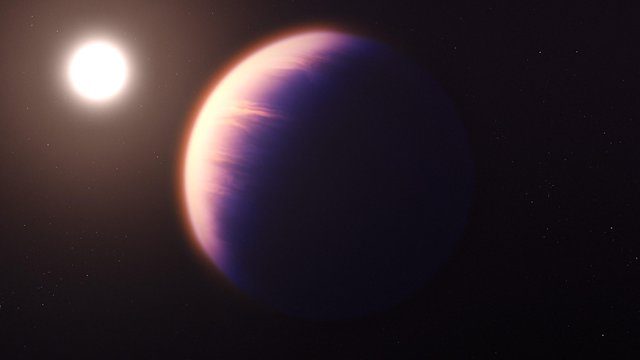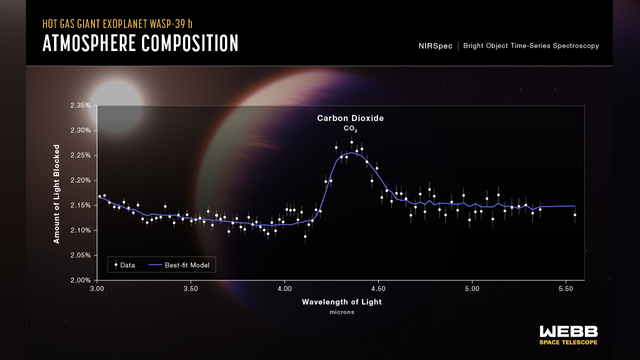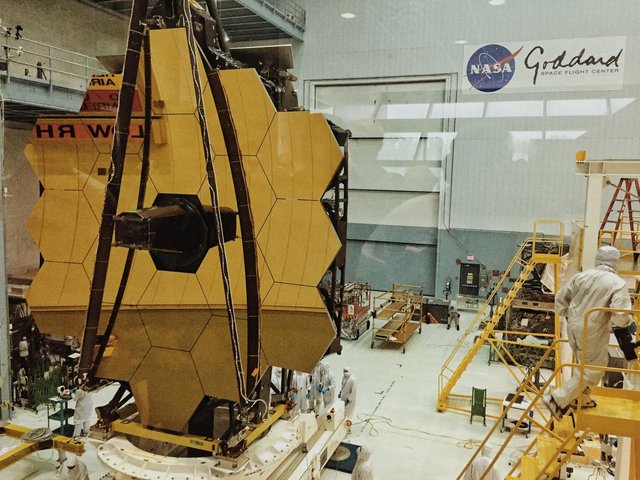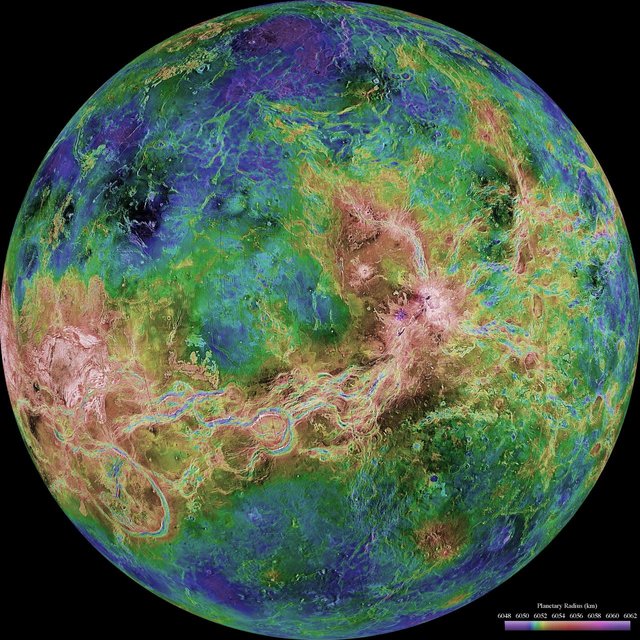The first exoplanet with carbon dioxide detected.
The first exoplanet with carbon dioxide detected.

free source of right to come from a government entity. Crédito: NASA, ESA, CSA y J. Olmsted (STScI)
The first exoplanet with carbon dioxide in its atmosphere is detected, this world is called WASP-39 b, which is also at a very respectable distance of about 700 light years, when it came out in the light of the star that illuminates that planet. In Europe the Black Death was suffering from a plague and in America the Mexicas were founding the city of Mexico Tenochtitlan.

Free source of right to come from a government entity. Credits: Illustration: NASA, ESA, CSA, and L. Hustak (STScI); Science: The JWST Transiting Exoplanet Community Early Release Science Te
The star is similar to the sun and the exoplanet is a gas giant 1.3 times larger than Jupiter although it has only a quarter of its mass, this is because it is very swollen, since it is very close to its star eight times closer to its star than Mercury is to the sun.

Source from NASA Archives Royalty Free.
In that world there can be no life, it is too hot, it is uninhabitable, besides the C02 cannot be breathed and the earth is a problem since they are a greenhouse gas, so its importance lies in the fact that it serves to check the infrared sensitivity of the James Webb necessary for when you have to analyze the atmosphere of more interesting worlds with a size similar to that of the earth that are in the habitable zone of their star.

Source from NASA Archives Royalty Free.
In addition, CO2 cannot be breathed by us humans, but other forms of life can, in fact, the primitive earth did not have oxygen, the atmosphere was composed of nitrogen and CO2 and despite this it was a world full of microscopic life, so a planet with a lot of CO2 is not necessarily a planet without life, and a lot of greenhouse effect can make the planet end up like Venus, but an adequate amount can be very useful so that the planet does not freeze.
Thank you for visiting my blog. If you like posts about #science, #planet, #politics, #rights #crypto, #traveling and discovering secrets and beauties of the #universe, feel free to Follow me as these are the topics I write about the most. Have a wonderful day and stay on this great platform :) :)
! The truth will set us free and science is the one that is closest to the truth!
Hi @jorgebgt , excellent post
Thank you!!